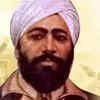
On April 13, 1919, thousands gathered at Jallianwala Bagh in Amritsar, peacefully protesting the repressive Rowlatt Act. What followed was one of the darkest chapters in Indian history. British Brigadier General Reginald Dyer ordered his troops to open fire without warning. Hundreds were killed, and many more were injured, including women and children. Among the witnesses was a young boy—Udham Singh.

That moment carved a deep wound into Udham’s heart. But unlike many who carried silent grief, he turned his pain into a lifelong mission. Over the next 21 years, he built his purpose brick by brick—educating himself, joining revolutionary movements, and patiently waiting. In 1940, in London, he shot Michael O'Dwyer—the former Lieutenant Governor of Punjab who had endorsed Dyer’s actions. For this act, Singh was executed in 1940. But his message lived on: injustice must not be forgotten, and justice, no matter how delayed, must be delivered.
What Can We Learn from Udham Singh?

1. Pain Doesn’t Have to Break You Udham Singh didn’t allow grief to consume him. He didn’t fall into bitterness or helplessness. Instead, he allowed the memory of that painful day to fuel his sense of justice. In modern times, many of us experience pain—loss, betrayal, setbacks. Singh's story reminds us that it’s not the pain itself, but what we do with it, that defines our future.
2. Purpose Can Be a Lifelong Journey Udham Singh didn’t seek quick justice. He knew that real change takes time. His patience and long-term vision are rare qualities in today’s instant-results world. Whether it's a career goal, social cause, or personal mission, Singh’s life teaches us the importance of staying focused—even if results take years.
3. Emotional Resilience is a Superpower

To carry pain for decades and not let it turn into hate is a form of emotional intelligence. Singh never lost sight of his mission, nor did he allow himself to become distracted or broken. This kind of emotional strength is a skill we can develop—through mindfulness, reflection, and belief in our values.
4. Actions Speak Louder Than Slogans Udham Singh didn’t just talk about injustice—he acted. In a time where digital outrage is common, his life urges us to convert our concerns into meaningful efforts. Be it volunteering, starting a community initiative, or supporting the voiceless, real change requires action.
5. Let History Be Your Teacher Udham Singh didn’t forget history. He carried it with him—not as a burden, but as a compass. In our lives too, remembering where we come from—our roots, our struggles, and the people who stood before us—can be a source of strength and direction.
Final Thoughts Udham Singh is not just a historical figure. He’s a symbol of what it means to transform tragedy into strength, and revenge into revolution. On this anniversary of the Jallianwala Bagh massacre, let his story remind us: you don’t need to forget your pain—you need to use it. Whether you’re healing from personal trauma or fighting injustice in your community, let Singh’s legacy be your inspiration.
Explore the latest trends and tips in , , , , and at .
 On April 13, 1919, thousands gathered at Jallianwala Bagh in Amritsar, peacefully protesting the repressive Rowlatt Act. What followed was one of the darkest chapters in Indian history. British Brigadier General Reginald Dyer ordered his troops to open fire without warning. Hundreds were killed, and many more were injured, including women and children. Among the witnesses was a young boy—Udham Singh.
On April 13, 1919, thousands gathered at Jallianwala Bagh in Amritsar, peacefully protesting the repressive Rowlatt Act. What followed was one of the darkest chapters in Indian history. British Brigadier General Reginald Dyer ordered his troops to open fire without warning. Hundreds were killed, and many more were injured, including women and children. Among the witnesses was a young boy—Udham Singh.


